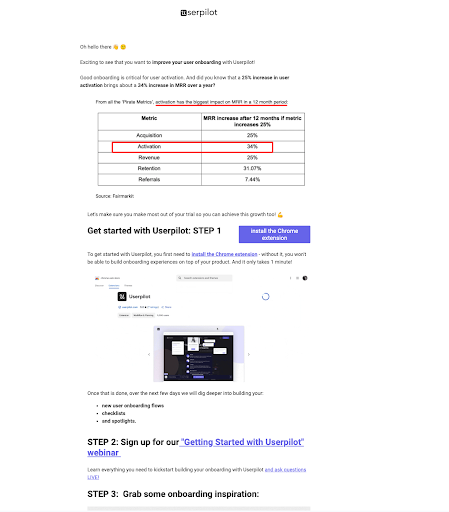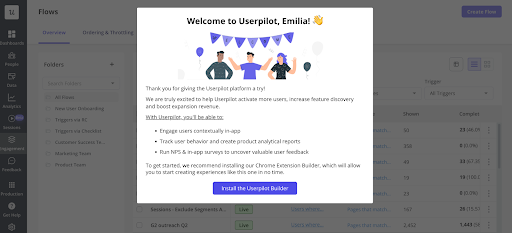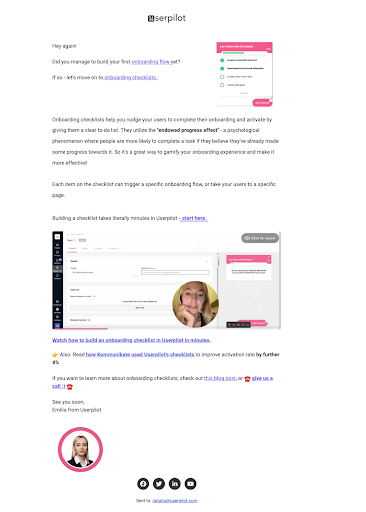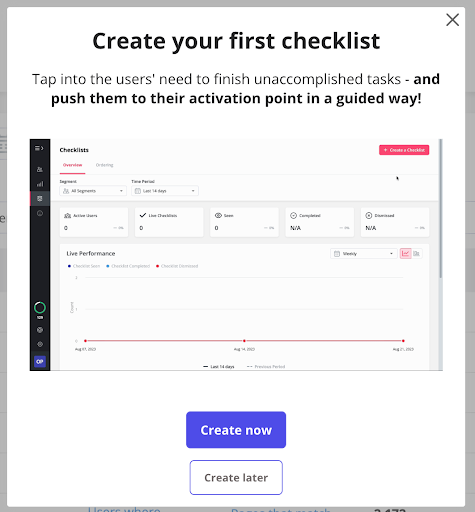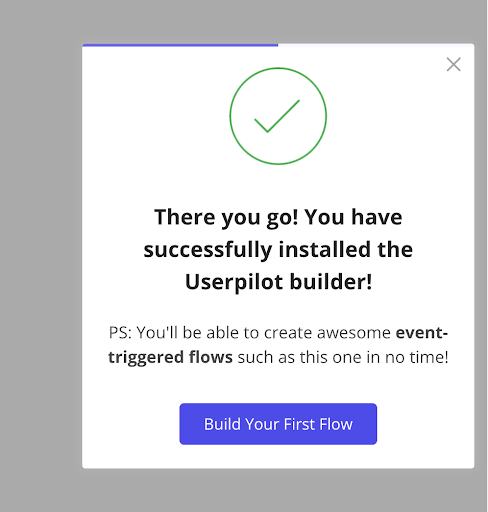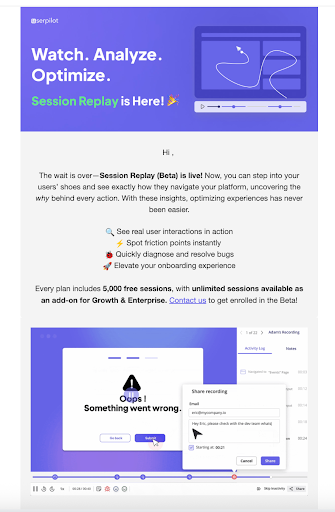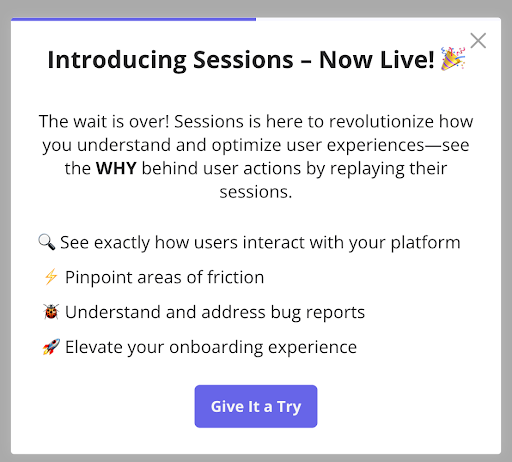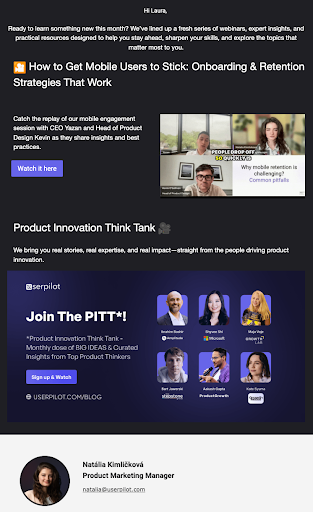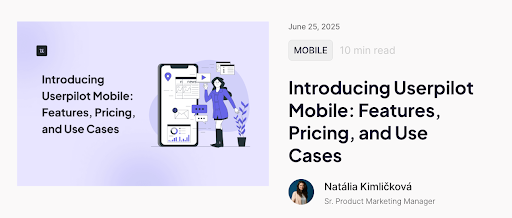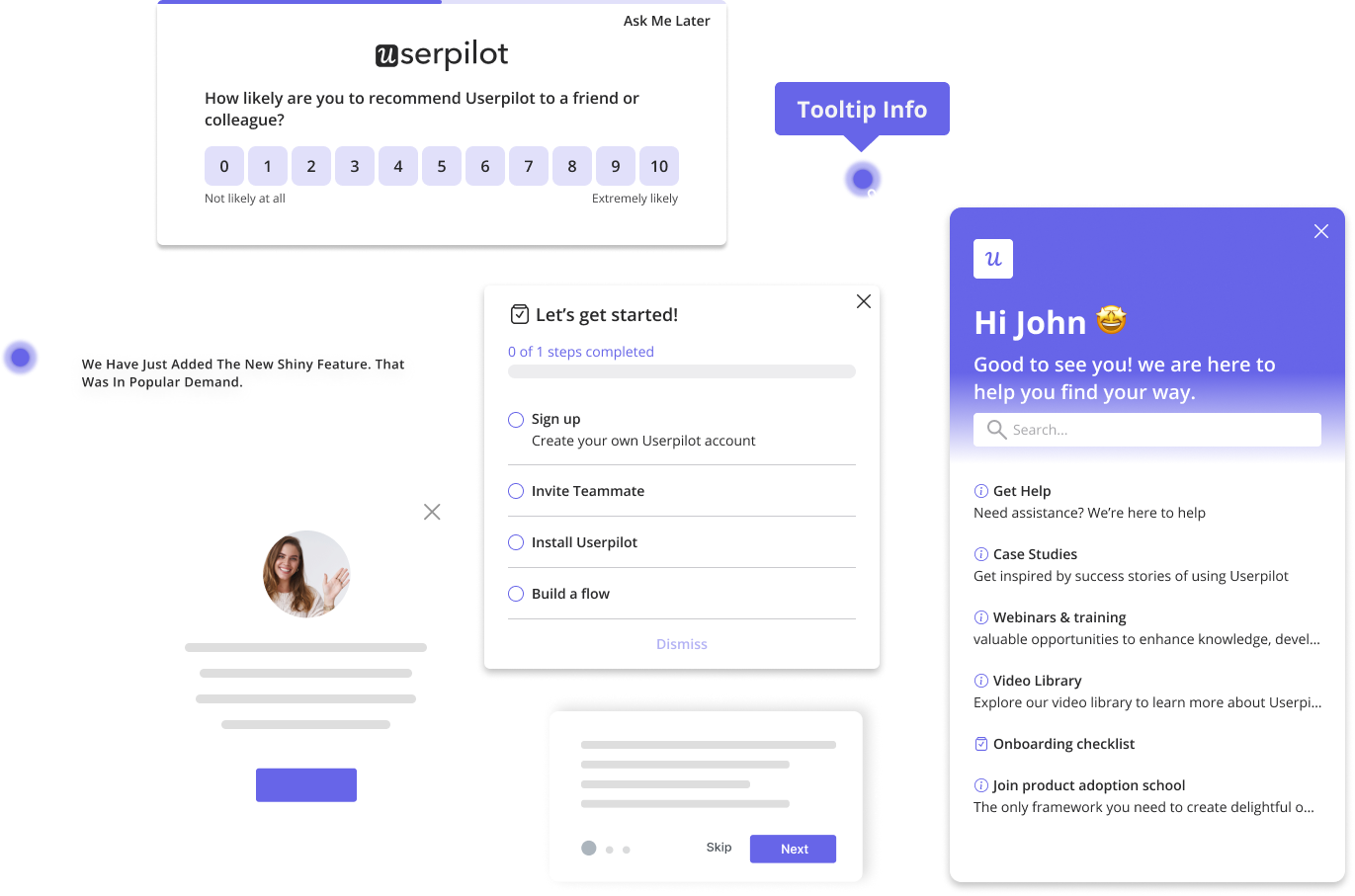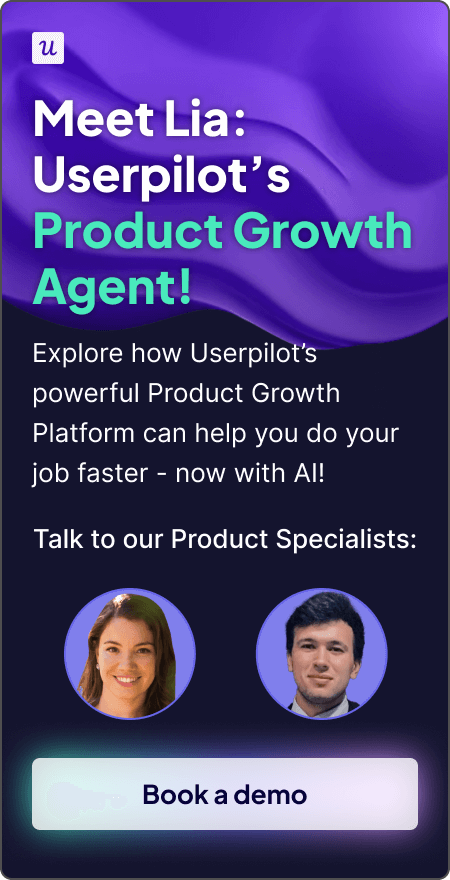How to Align Your Lifecycle Emails with In-App Messaging
As a B2B SaaS marketer, I live and breathe product-led growth. My core mission is to help our product shine, getting it in front of the right users and ensuring they find deep, lasting value. A huge part of that is making sure our communication meets users exactly where they are, whether that’s in their inbox or right inside our app.
It’s not just about sending messages; it’s about sending the *right* messages, at the *right* time, across all channels.
That’s why aligning lifecycle emails with in-app messaging isn’t just a best practice; it’s a strategic necessity for product adoption and retention.
We’ve all seen disjointed communication: an email promoting a feature you’ve already mastered, or an in-app message reminding you of a task you finished days ago. This fragmented experience confuses users and erodes trust.
On the flip side, when your emails and in-app messages work together, they create a powerful, consistent experience that guides users smoothly through their journey.
Try Userpilot Now
See Why 1,000+ Teams Choose Userpilot
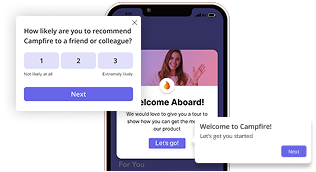
Understanding omnichannel customer lifecycle marketing
Before we dive into the how, let’s nail down what we mean by “omnichannel customer lifecycle marketing.” It’s a fancy way of saying we tailor our outreach based on where a user is in their journey with our brand. From the moment someone first hears about us to when they become a raving fan, we aim to give them exactly what they need to move forward. This approach helps us drive continuous engagement and boosts important metrics like customer lifetime value. Think about it:
- During acquisition, we offer prospects focused information that speaks directly to their needs.
- When onboarding new users, we guide them on how to use our product and prompt them to complete key setup tasks, helping them reach their “aha moment” quickly.
- As users become regular, we keep them engaged with timely reminders and prompts to encourage ongoing use.
- For our long-term users, we help them unlock more value by showing them advanced features.
Adopting an omnichannel strategy increases how often users see our brand and improves their overall experience. Instead of treating emails and in-app messages as separate entities, we use them to reinforce a single, cohesive message. This encourages users to delve deeper into our product, guiding them toward their next big step.
On the other side, this ensures cross-collaboration between teams, so everyone is aligned with the customers. Now, let’s explore how we bring this alignment to life across the customer journey.
How to master onboarding with aligned messaging
Onboarding is often the most critical stage. It sets the tone for a user’s entire relationship with your product. Our goal here is to get new users up to speed fast and keep them motivated as they learn. Tying your in-app messages to your onboarding emails reinforces both the information shared and the connection you build with new users.
1. Welcome new users with more context
The first step in any user onboarding process is a warm welcome. After a user signs up, an automated welcome email is a must. This email can confirm their registration and reinforce the value your product offers.
Consider setting up a welcome screen in your app to gather initial user data for personalized onboarding right away.
For instance, you might ask new users about their goals or roles through an in-app welcome survey. This allows you to immediately tailor their experience and follow up with relevant in-app guides or email content.
2. Provide clear instructions in and out of the product
Once new users are in, they need to learn how to use your product effectively. I find it helpful to use emails for “big picture” instructions, like a weekly summary of progress or a guide to getting started with a core feature.
In parallel, in-app guidance, such as tooltips or interactive walkthroughs, delivers the nitty-gritty details exactly when users need them.
For example, an email might prompt a user to start a new project. Once they click into the app, an interactive walkthrough can then guide them step-by-step through the process directly within the product interface.
If a user hasn’t completed a crucial setup step, an email reminder can gently nudge them, explaining the benefit of taking action. This ensures that even if they aren’t actively in the app, they still get the necessary prompts.
3. Celebrate early wins
Celebrating small victories keeps users motivated. Acknowledge quick wins directly in the app as they happen.
For example, a small fanfare or a quick message after they complete their first task. For larger milestones, like completing their profile or using a key feature for the first time, an email can serve as a more formal celebration, reinforcing their progress and encouraging continued use.
This dual approach helps build user confidence and drives deeper engagement. We’ve seen how powerful onboarding gamification can be for boosting motivation.
How to keep users engaged and habitual
Onboarding is just the start. The real test is keeping users engaged over the long haul. Our goal is to make using our product a habit, a natural part of their routine.
4. Set up reminders to create habits
Timely reminders play a big part in building habits. The frequency depends on your product’s natural use cycle.
- For a daily-use app, push notifications and quick in-app messages work well.
- For less frequent use, a weekly email summarizing their progress or highlighting a new benefit can pull them back in. The key is to make these reminders valuable and not just nagging.
- For users whose activity drops, a win-back email or targeted mobile in-app message can reactivate them.
I focus on reminding them of the value they previously found or a new feature they might love. These messages work best when they offer a clear reason to return, rather than just asking them to.
5. Encourage strategic feature exploration
Beyond basic use, we want users to explore the full depth of our product. Introducing new or underutilized features can be done effectively with a blended approach.
An email might announce a new feature or share “pro tips” for power users. Once they click through, in-app tutorials, tooltips, or feature spotlights can guide them on how to use it right then and there.
We use new feature announcements to pique interest in emails, then provide contextual onboarding directly in the product to ensure adoption. This reduces friction and helps users discover new value.
I should note that not every feature is relevant to every customer. That’s why you need to connect analytics and segmentation to deliver the right messages (features) to the right persona.
6. Gather feedback proactively
Understanding how users feel about their experience is vital. Sending quick, one or two-question in-app surveys at relevant moments can gather real-time feedback.
For more in-depth responses, an in-app prompt can invite users to share thoughts via email, creating a direct customer feedback loop.
This proactive approach helps identify pain points before they lead to churn. If a user expresses dissatisfaction, automated follow-up emails can offer help or a direct line of support. We aim to offer proactive customer service whenever possible, showing users we care before they even have to ask.
How to drive account expansion
The ultimate goal is to help users get the most value from our product. This means turning regular users into power users and identifying opportunities for upgrades and expansion.
7. Share tips for advanced users
As users become more adept, we introduce them to advanced features and workflows. Emails can share detailed case studies or invite them to webinars showcasing power-user techniques.
Within the app, subtle tooltips or a dedicated in-app resource center can offer “pro tips” or shortcuts, available on demand. The idea is to drip-feed more complex functionalities as users are ready for them.
8. Announce new features strategically
When we launch something new, a coordinated effort is key. An email blast announces the new feature and its benefits, perhaps linking to a blog post or a dedicated landing page.
In the app, a modal or a slideout can highlight the new addition the moment a user logs in, guiding them directly to it. This double-pronged approach maximizes visibility and encourages immediate exploration. Tools like Userpilot make it easy to create engaging product updates in-app.
9. Facilitate upgrades and conversions
For freemium users or those on lower-tier plans, aligning messages for conversion is essential. In-app nudges can highlight the limitations of their current plan or showcase premium features that directly solve a problem they’re facing.
For example, if a user hits a storage limit, an in-app message about upgrading makes sense. This is then backed up by a targeted email marketing campaign, perhaps offering a special discount or detailing the full benefits of an upgrade, such as those covered in upselling examples. Focus on the value they gain, not just the cost.
Tools and analytics to power your strategy
Implementing this level of alignment and personalization without the right tools would be a nightmare. We rely heavily on platforms that help us understand user behavior and deliver contextual experiences. A product-led growth strategy demands powerful analytics to track every interaction.
With tools that offer user engagement analytics and a comprehensive user onboarding flow builder, we can see where users get stuck, what features they love, and what messages resonate. This allows us to continuously optimize our strategy, reducing churn and boosting customer retention.
For instance, Userpilot provides robust product analytics to help us understand user journeys and measure what truly matters, like how our in-app onboarding flows and email campaigns impact user activation and account expansion.
By using its in-app messaging for flows, tooltips, and checklists, and connecting these with our email platform inside the same tool, we can track engagement across channels without pulling data from multiple platforms.
This unified approach ensures we’re not just guiding users effectively but also tying these efforts back to our ultimate goals, creating a truly omnichannel customer experience that drives growth.

